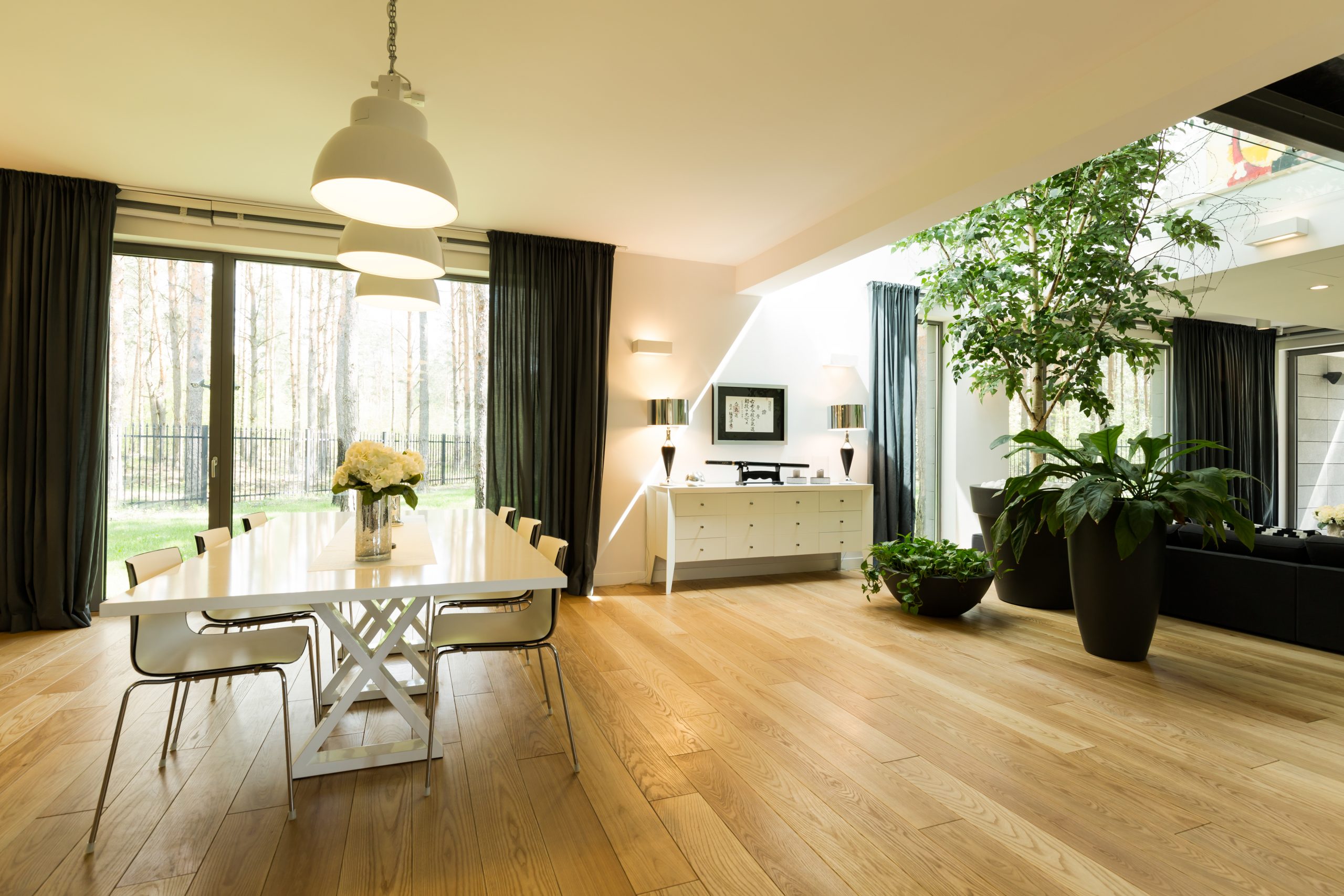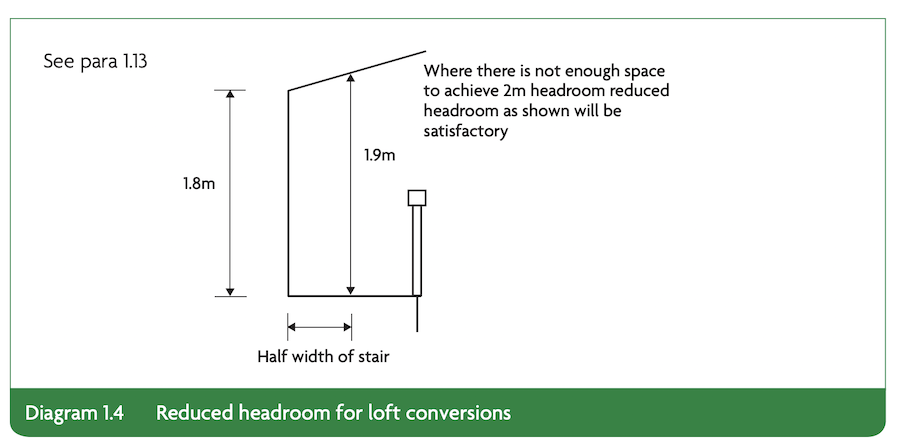
How Tall is a House?
The standard ceiling height of a room in the UK is typically 2.4 meters or 8 feet.
However, this can vary depending on the age and style of the building, as well as the specific requirements of the room.
For example, in some older buildings or period properties, the ceiling height may be lower, while in newer properties, the ceiling height may be higher to create a sense of spaciousness. Additionally, rooms with specific functions such as gyms or sports halls may have higher ceilings to accommodate activities such as basketball or gymnastics.
| UK Ceiling Heights (metres) | |||
|---|---|---|---|
| Building Type | Minimum | Average | Optimum |
| Typical house extension | n/a | 2.3 | 2.5 – 2.7 |
| Side return extension | n/a | 2.2 | 2.4+ |
| Dormer loft conversion | n/a | 2.3 | 2.3 – 2.4 |
| New House in UK | 2.3 | 2.4 | 2.6 – 3 |
| New house in London | 2.5 | 2.4 | 2.6 – 3 |
| Stairs to conversion or extension | 1.8 | 2.0 | 2.1 |
| Stairs in new house | 2.0 | 2.0 | 2.1+ |
Here are some typical ceiling heights for different types of properties in the UK:
The standard ceiling height for a residential property:
- Houses and apartments: 2.4 meters (8 feet)
- Loft conversions: 2.1 meters (7 feet) at the highest point

The standard ceiling height for a commercial property:
- Offices: 2.7 to 3.0 meters (9 to 10 feet)
- Retail spaces: 3.0 to 4.0 meters (10 to 13 feet)
- Warehouses and factories: 4.0 to 8.0 meters (13 to 26 feet)
The standard ceiling height for an institutional building:
- Schools and universities: 3.0 to 3.6 meters (10 to 12 feet)
- Hospitals and healthcare facilities: 3.0 to 3.6 meters (10 to 12 feet)
- Museums and galleries: 3.0 to 4.0 meters (10 to 13 feet)
It’s worth noting that these are general guidelines and that ceiling heights can vary based on many factors, including the age, style, and design of the building. Additionally, some rooms within a property may have higher or lower ceilings depending on their intended use.
What is the average ceiling height in a modern UK house?
The standard ceiling height in a modern UK house is usually around 2.4 meters (approximately 7 feet 10 inches). This height provides a comfortable living space and meets building regulations.
Are there any regulations governing ceiling height in the UK?
Yes, there are building regulations in the UK that specify minimum ceiling height requirements for habitable rooms. In most cases, the minimum height is 2.1 meters (approximately 6 feet 11 inches). However, exceptions may apply, especially in areas like under-stair cupboards and bathrooms.
Can the ceiling height be different in older properties?
Yes, older properties may have lower ceiling heights compared to modern constructions. Victorian and Edwardian-era houses, for example, often feature lower ceilings, typically around 2.2 to 2.3 meters (approximately 7 feet 3 inches to 7 feet 7 inches).
Can the ceiling height affect property value?
Ceiling height can influence property value to some extent. Higher ceilings are generally considered desirable as they create a sense of spaciousness and elegance. This is especially true for bedroom sizes, as they can vastly differ from house to house. However, the impact on property value also depends on other factors such as the overall condition of the property, location, and local property market trends.
Are there any exemptions for ceiling height in specific rooms?
Yes, there are exemptions for certain rooms. In rooms with sloping ceilings, the minimum ceiling height can be reduced, as long as a significant portion of the room has a height of 2.1 meters or higher.
Can I raise the ceiling height during a renovation or extension?
Raising the ceiling height during a renovation or extension can be a major structural change and may require planning permission and approval from building control authorities. It’s essential to consult with a qualified architect or builder to assess the feasibility and legality of such modifications.
Remember that these are general guidelines, and for precise information about the ceiling height regulations in a specific property or area, it’s advisable to consult local building authorities or a professional architect.
What are the advantages of higher ceiling heights?
Higher ceiling heights can create a sense of spaciousness and elegance in a room. They can also accommodate larger windows, allowing more natural light to enter and improving ventilation. Additionally, they can make a property feel more modern and appealing.
Can low ceiling heights affect property value?
Generally, lower ceiling heights might be less appealing to potential buyers or renters, as they can create a feeling of confinement, especially to tall people. However, other factors like location, layout, and overall condition of the property also play a significant role in determining its value.
Are there historical variations in UK ceiling heights?
Yes, older properties might have lower ceiling heights compared to more modern constructions. This is due to changing architectural styles and construction methods over time. Georgian and Victorian properties, for example, often have higher ceilings compared to some post-war houses.
How do I measure the ceiling height in my property?
To measure ceiling height, use a tape measure or a measuring tool that can reach from the floor to the ceiling. Place one end of the tape measure on the floor and extend it upward until it touches the ceiling. The measurement will give you the distance between the floor and the ceiling.
Do loft conversions affect ceiling heights in UK homes?
Loft conversions can impact ceiling heights, as they often involve adding a new floor to an existing space. This might result in reduced ceiling heights in the lower levels of the property. It’s important to consider these changes during the planning stage of a loft conversion.
Can I modify ceiling heights in listed buildings?
Modifying ceiling heights and even decorating listed buildings can be particularly challenging due to strict preservation regulations. Changes to ceiling heights might require special permissions from the local planning authority. It’s advisable to work with experts who are familiar with listed building regulations.
Remember that specific regulations and trends might change over time, so it’s always a good idea to consult local building codes and professionals for the most up-to-date information and advice regarding ceiling heights in UK properties.
What do UK Organisations Say About Ceiling Height
The UK’s professional body for architects, The Royal Institute of British Architects (RIBA), publishes documents that are created to guide on building designs. Much like previously noted, their guidance recommends a minimum ceiling height of 2.4 metres for habitable rooms.
The National House-Building Council (NHBC) is a warranty provider for new homes in the UK. They publish technical standards documents for new homes and this includes focusing on space space standards. Similar to the above, the NHBC’s standards puts a minimum requirement of 2.3 metres of ceiling height habitable rooms.
The Building Regulations in the UK do not specify a minimum ceiling height for residential properties, but they do provide guidance on factors such as room sizes, ventilation, and fire safety, which indirectly influence ceiling heights.


Leave a Reply